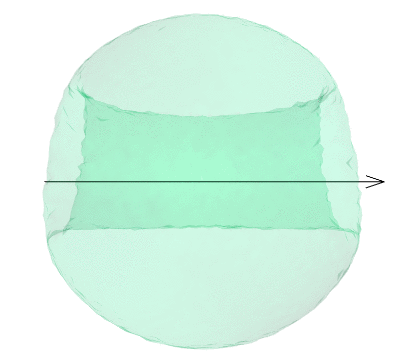
My Ph. D. thesis (digital copy available on request) focused on stars around a supermassive black hole binary. This animation shows the stability volume in velocity space for a star in the equatorial plane of such a supermassive black hole binary, or a planetoid in the equatorial plane of a binary star. Velocities inside the volume produce stable orbits while velocities outside it produce unstable ones. In the presence of a single gravitational object at the centre of the system instead of a binary, the stability volume looks like a sphere: stable orbits are ones with velocity magnitudes smaller than the local escape velocity. If the central object has a finite size though, a loss cone is carved, where orbits with low angular momentum produce radial orbits, which are said to be unstable because they lead to tidal disruption (or being swallowed) by the central object. So in this case, the loss cone would appear as a cylinder in this velocity presentation. When the central object is a binary, the loss cone becomes much larger, because in addition to tidal disruption, the orbit can be dynamically unstable: in other words one of the black holes can kick the star out of the system. The fact that the binary supermassive black hole is rotating in a particular orientation breaks the symmetry: stellar orbits which are retrograde with respect to the central binary are more stable than prograde ones. This leads to the enlarged cylinder to also be distorted.